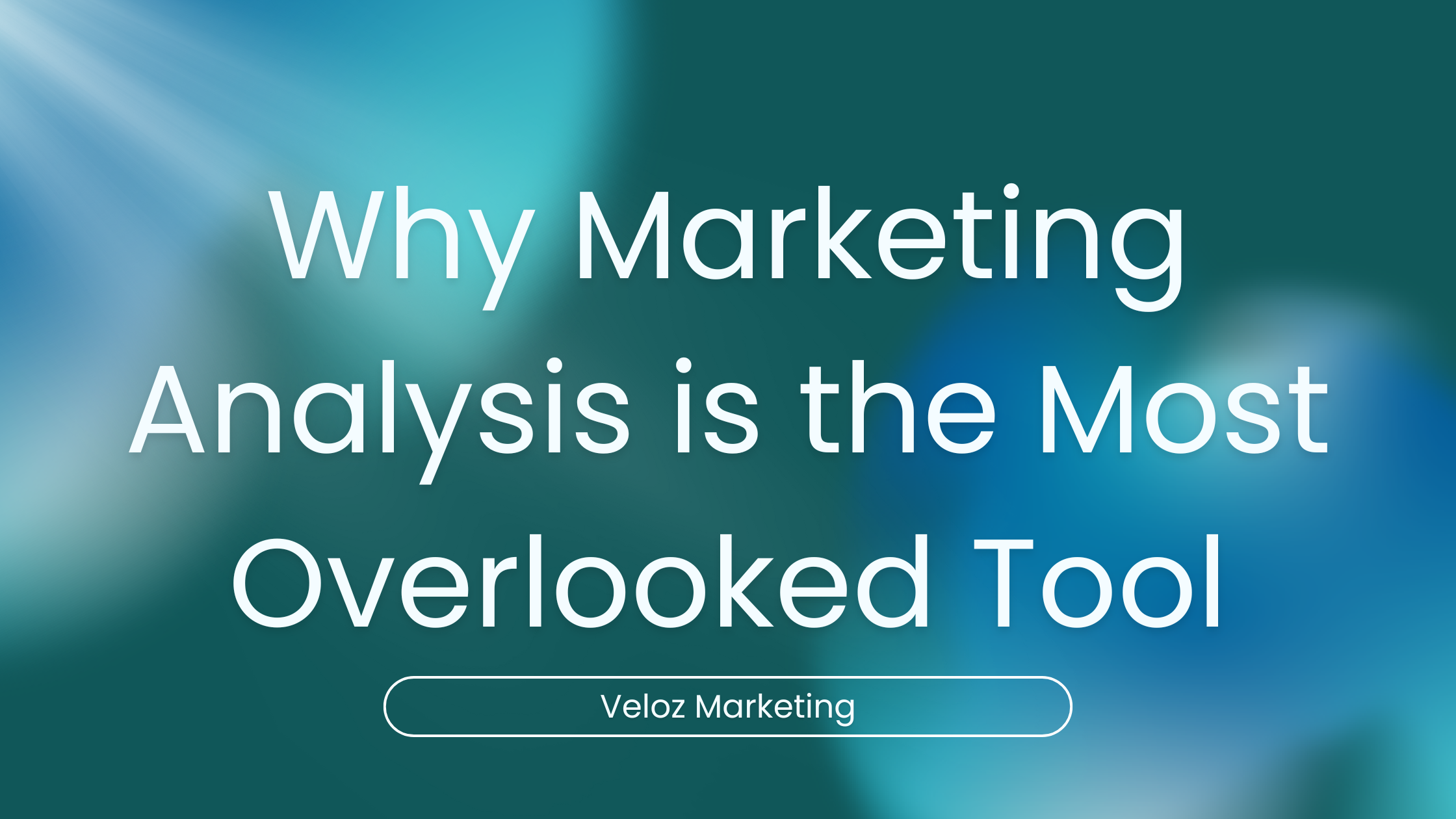
Most businesses are spending on marketing — ads, social, SEO, email, influencers — but here’s the uncomfortable truth:
Many have no idea what’s actually working.
They’re pouring money into campaigns with no clear data, no strategic tracking, and no insight into what’s generating leads, sales, or ROI.
Marketing analysis fixes that.
It’s the difference between guessing and growing.
In this post, we’re breaking down what marketing analysis is, why it matters, and how it turns scattered marketing into a real growth engine.
What is Marketing Analysis?
Marketing analysis is exactly what it sounds like:
Measuring and evaluating how your marketing is performing — across channels, platforms, campaigns, and time.
It answers questions like:
- Where are our leads actually coming from?
- Which campaigns are generating the most sales?
- Are we wasting money on ads that don’t convert?
- What kind of content brings in the right traffic?
- Who’s our most valuable customer — and how do we get more of them?
Think of it as your marketing GPS:
Without it, you’re just driving in circles.
Why Marketing Analysis Matters (A Lot)
Here’s what good analysis can do for your business:
✅ Identify What’s Working (and What’s Not)
You might be running SEO, Google Ads, and Instagram campaigns — but which one is actually generating leads?
Without analysis, you’re just guessing. With it, you can double down on what works and cut what doesn’t.
✅ Save Time and Money
Marketing budgets get wasted fast when there’s no visibility.
With analysis, you avoid burning cash on underperforming campaigns — and focus on high-ROI activity.
✅ Understand Your Customers Better
Good analysis doesn’t just track clicks — it helps you understand behavior:
- Where do customers drop off?
- What kind of content do they engage with?
- Which offers convert best?
- What’s their journey before buying?
When you know your audience, you can speak their language and solve their problems faster.
✅ Improve Future Campaigns
Marketing analysis gives you a feedback loop — every campaign becomes a lesson.
You get smarter with every ad, every post, every email. Over time, your results compound — not just because you’re doing more, but because you’re doing it smarter.
What We Track in a Marketing Analysis
Here’s what we look at when analyzing a client’s marketing:
1. Website Analytics (Google Analytics / GA4)
- Traffic sources: Where are visitors coming from?
- Time on page & bounce rate: Are they engaged or clicking away?
- Top pages: What content is working?
- Conversion paths: What’s leading to sales or signups?
2. Ad Campaign Performance
- CTR (click-through rate)
- CPC (cost per click)
- ROAS (return on ad spend)
- Conversion rate
- Frequency (are people seeing the same ad too often?)
We compare performance across platforms — Facebook vs. Google Ads, organic vs. paid — to see where to scale or pause.
3. SEO Metrics
- Keyword rankings
- Organic traffic growth
- Click-through rate from search
- Backlink quality
- Content performance
Are we ranking for high-intent terms? Are people clicking through? Are they converting?
4. Social Media Analytics
- Engagement rate
- Reach and impressions
- Top-performing content
- Follower growth
- Website clicks from social
We don’t care about vanity metrics. We care about what’s moving your audience to action.
5. Email Marketing Data
- Open rates
- Click-through rates
- Unsubscribe rate
- Conversions from email
We analyze not just who opens, but what they do next.
Real Example: How Marketing Analysis Saved a Client $1,500/month
One of our clients — a boutique fitness brand — came to us after running their own Facebook and Google ads for 6 months.
Their numbers looked “fine” on the surface — lots of impressions and clicks — but they weren’t seeing results.
We audited their campaigns and found:
- Google Ads had a decent click-through rate, but no conversion tracking — they had no idea if it was leading to signups.
- 68% of their Facebook ad budget was going to a broad audience in the wrong age group.
- Their best-performing blog post (which ranked well on Google) had zero internal links leading visitors to book a class.
Once we fixed the tracking, adjusted their targeting, and optimized content flow — we cut ad spend by $1,500/month and increased trial signups by 47% in 60 days.
That’s the power of real analysis.
Common Mistakes Businesses Make Without Analysis
❌ Relying on Gut Feelings
“I think our Instagram is doing well” isn’t a strategy. It’s a guess. Data tells the real story.
❌ Tracking the Wrong Metrics
It doesn’t matter if your post got 2,000 likes — did it bring traffic, leads, or sales?
❌ No Conversion Tracking
You can’t improve what you don’t measure. Every funnel — ads, website, emails — needs conversion data.
❌ Looking at Data in Silos
Email might be down, but maybe it helped close someone who saw your Instagram first. Multi-channel attribution matters.
What Marketing Analysis Looks Like When You Work With Us
We provide clear, no-fluff reporting. Not pages of charts with no context.
Here’s what you can expect:
- Monthly performance reviews: What happened, what worked, what we’re changing
- Channel-by-channel insights: Social, SEO, ads, email — all broken down
- Real business metrics: Leads, revenue, cost per acquisition — not just impressions
- Recommendations and next steps: We don’t just show data — we act on it
It’s not just reporting. It’s decision-making support.
Final Thought: If You’re Not Analyzing, You’re Just Spending
Marketing without analysis is like driving blindfolded.
You might get lucky — but chances are, you’ll waste time, money, and momentum.
With marketing analysis, every dollar spent becomes a lesson. Every campaign gets sharper. Every win becomes repeatable.
Whether you’re doing SEO, social, paid ads, or content — analysis is what turns activity into strategy.
Want to see what’s working (and what’s not) in your current marketing?



